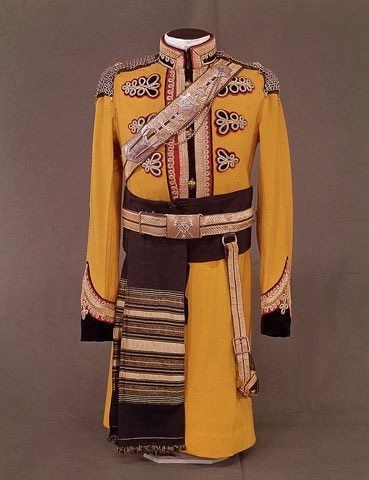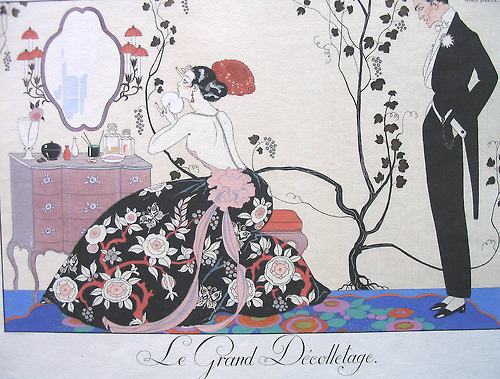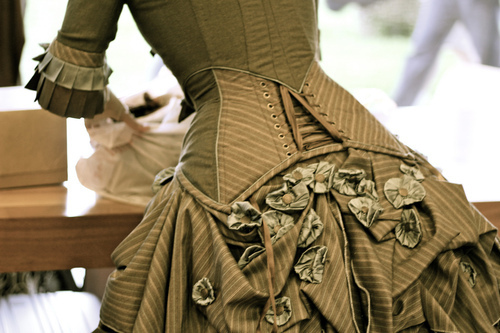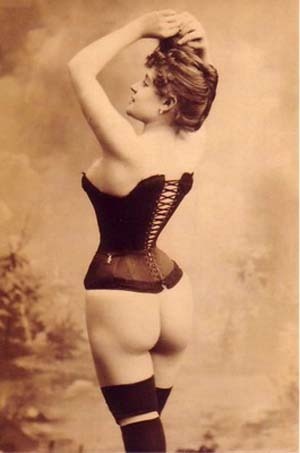G.D. Falksen's Blog, page 1086
June 3, 2013
Cosplay Guide for The Ouroboros Cycle
Doctor Babette Beatrice...
[image error]
Cosplay Guide for The Ouroboros Cycle
Doctor Babette Beatrice Varanus
Hair: Auburn
Eyes: Green
Height: 4’11”
Weight: 95 lbs.
Build: Waifish
Year of Birth: 1844 (apparent age 25)
Clothing:
Youth (1861-1870):
As a young woman, Varanus dressed in the conventional clothing of the era, which included wide skirts worn over a crinoline. However, it is worth noting that Varanus actually hates cumbersome skirts and would often wear her riding habits (which did not use a crinoline) while at home. For formal occasions, such as the annual Christmas Fete, she had no choice and was forced to wear not only the crinoline but also very over-adorned dresses, with her hair in ringlets as was common at the time. In private, she wore her hair more simply, thought still held up given its great length. Above all, Varanus hated fussy details like bows and lace, and her private clothes were always free of them (though her ball gowns made up the difference, much to her annoyance).
While Varanus was at school in the mid-late 1860s, the crinoline began to evolve into an early form of the bustle. This was a far more tolerable style for her tastes and she was more inclined to wear it than her dresses in the early part of the decade. However, in private she still made a habit of dressing without an under-dress frame, preferring flowing clothes that were easy to move about in.
Doctor Sauvage (1870)
During the Franco-Prussian War, Varanus disguised herself as a man (using the assumed name “Hercule Sauvage”) and volunteered as an army surgeon. In this capacity she dressed as a man in a three-piece suit with a frock coat, as was common at the time. During this time she began to cut her hair short for the time (shoulder length) as part of her disguise, and it remained at that length thereafter.
Among the Shashavani (1871-1887)
Through the 1870s and 1880s fashion began to develop in a manner far more pleasing to Varanus’s tastes. As skirts began to move toward the back, the narrowness of the fashionable silhouette began to suit her need for mobility (although with mobility in mind, Varanus preferred the hem of her dresses to rest above the ankle). The rise of the bustle did not bother Varanus as it kept the silhouette narrow and easy to move in, although as a matter of habit it was not uncommon for her to dispense with it for the sake of ease. After becoming Shashavani , Varanus was able to more easily tolerate the weight of a full skirt, allowing her to dress to fashion without feeling encumbered. And living among the Shashavani, whose taste in clothing was both archaic and heavily influenced by Georgian dress, Varanus found that keeping up with high fashion in England and France allowed her to keep ahold of her sense of identity. However, even though dresses during this period proved more pleasing to her than in the ‘60s, Varanus still had no patience for small or fussy details, and her clothing tended to be simple and “masculine” (by the standards of the day), without bows or similar accouterments.
It is worth noting that Varanus is extremely fond of ladies’ top hats (typically worn as part of a riding habit), preferring them to more conventional hats.
A note about undergarments:
Undergarments being undergarments, there are few instances in which Varanus’s would have been seen, but for the sake of authenticity it is worth noting them. The base garments were below the knee drawers and a chemise. Over them would be worn a corset, and while Varanus habitually avoided overly tight lacing she nevertheless accepted the corset as a normal part of her undergarments. In the 1860s a crinoline was worn over these garments; in the 1880s, a bustle was worn over them. Finally, petticoats were added to finish the collection of undergarments. The dress or gown was then placed over these undergarments.
Do check out the Pinterest board for the book here for more help and inspiration if you have need of it.
*(NOTE: As with all cosplay, do not feel restricted from cosplaying a character that is of a different height and/or build from you. Varanus has an extremely rare height and build, and this should not discourage anyone from cosplaying her if they want to. Also, if you do decide to cosplay Varanus, have fun and please be sure to send me pictures.)
1960s fashion photo by David Bailey
Elizabeth Boott wearing up-to-date bustled fashions (1885)
by...

Elizabeth Boott wearing up-to-date bustled fashions (1885)
by Frank Duveneck.
Clashes mar protests across Turkey
Something in the world that should be keep track of. I hope every one is OK and this gets better fast.
June 2, 2013
Dancer
(x)
· Full dress kurta, 1st Duke of York’s Own Lancers...

· Full dress kurta, 1st Duke of York’s Own Lancers (Skinner’s Horse), 1902-1914.
The distinctive full-dress kurta (long coat) was worn by both British and Indian officers of Skinner’s Horse. The garment is faced with black velvet and the decoration is of gold lace and russia braid, some of which is on red cloth. The adoption of distinctive yellow kurtas on the regiment’s formation in 1803 prompted the nickname ‘the yellow boys’. The son of a Scottish father and a Rajput mother, Skinner is believed to have chosen this colour after an ancient Rajput custom. The tradition held that warriors riding into battle would vow to win or die in the attempt. They would then anoint their faces with saffron and put on ‘Clothes of the Dead’, yellow robes tied over their armour with yellow sashes.
National Army Museum, London
George Barbier
‘Le Grand Decolletage’
1921

George Barbier
‘Le Grand Decolletage’
1921






